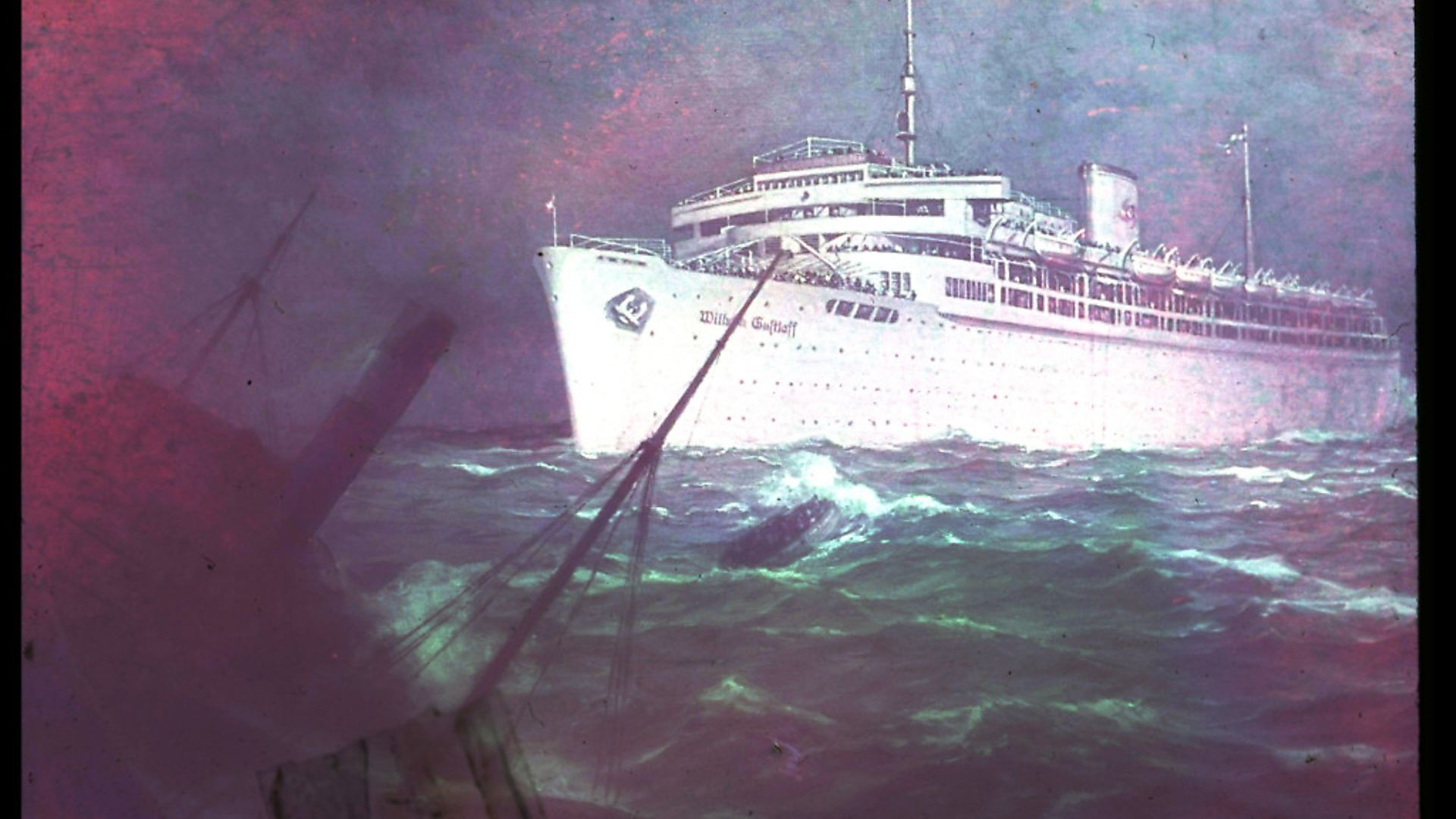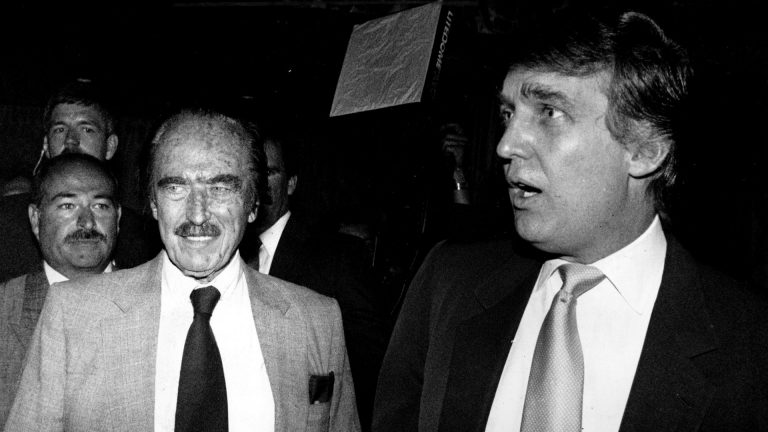
The sinking of the Wilhelm Gustloff remains the world’s worst ever maritime disaster, yet a little known footnote in the history of the Second World War. RAY KERSHAW explores its complex legacy
On the evening of January 30, 1945 – the 12th anniversary of the Nazis’ accession to power – Adolf Hitler made his last radio address to the German people. With the Red Army approaching his capital, his Reich in ruins, its borders already breached, he exhorted “every German to do his duty to the last”.
Among those listening to his words were thousands of German refugees on board the liner Wilhelm Gustloff, for whom the end would come within moments of the broadcast. Hours earlier, the ship had left Gotenhafen (now Gdynia, in Poland) bound for the comparative safety of a port further west, with more than 10,000 people on board, almost all of them civilians, more than half of them children, evacuated from the Third Reich’s eastern regions which the Soviet Red Army would soon overrun.
As the passengers and crew listened to Hitler’s final speech being broadcast to them, sailors on a Russian submarine shadowing the liner were preparing their attack. Minutes later, three torpedoes (nicknamed ‘for the Motherland’, ‘for Leningrad’ and ‘for the Soviet people’, struck Wilhelm Gustloff on her port side. Within an hour, her wreck was lying on the bottom of the icy Baltic.
The sinking claimed around 10,000 lives and remains the world’s worst maritime disaster (with a death toll more than six times that of the Titanic’s), nadir of the world’s worst refugee catastrophe, and as fitting of Nazism’s death knell as Hitler’s final broadcast.
Yet this immense tragedy has been largely forgotten over the intervening 70 years – overshadowed by the even greater tragedies of the period, and its legacy made complex by the fact that while those who died were refugees, they were also citizens of the Third Reich. Yet complex history is still history, and history is made too by ordinary people, not merely those who lead them. Their stories sometimes serve as the best signposts for all times, and the Wilhelm Gustloff’s sinking and the events which lay behind it must be worth exploring.
The winter of 1945 was East Prussia’s coldest on record. The frozen sea along the Danzig Gulf created a treacherous shortcut for the millions of Germans fleeing menaced cities such as beautiful Königsberg (the ancient pre‑Berlin capital of Prussia – now Russian Kaliningrad) and prosperous independent city state of Danzig (the old‑Hanseatic West‑Prussian capital).
The Russian New Year offensive had demolished the German Reich’s eastern frontlines in days. Columns of civilians bearing overfilled cases, dragging home‑made sledges and pushing babies in prams, struggled west on foot. Mostly women, children, the old and infirm, they perished in their thousands of hyperthermia and hunger. It would later be known as the Great Flight.
The Red Army was close behind, avenging the havoc that the German armies had inflicted on Russia. Women feared what would be done to them. They fixed their hopes on the Führer’s impregnable capital. Few knew of Berlin’s bombing, just as few in Berlin knew of the Fatherland’s invasion. Hitler had promised no Russians would ever tread Germany’s soil.
Baltic peoples in danger look to the sea. The navy, it was rumoured, was speeding to help. Grand Admiral Dönitz had ordered all vessels, civilian and naval, to attempt the impossible. Thousands streamed to the ports. Had Germany implausibly snatched victory from defeat, the Nazis would have eulogised it like a civilian Dunkirk.
The first convoy left Pillau (now Baltiysk, in Russia’s exclave of Kaliningrad) on January 25, carrying 25,000 people. Two days later, the Russians reached the coast near Elbing (today Polish Elblag) between Königsberg and Danzig. East Prussia was surrounded. The fleet diverted to Gotenhafen (now Polish Gdingen), the region’s only major unthreatened port. Refugee numbers swelled to hundreds of thousands. They were frozen and starving but the ships raised their hopes. They had lost almost everything but might yet keep their lives. Most conspicuously uplifting was the mighty Wilhelm Gustloff – the people’s floating palace famous throughout Germany.
Launched by Hitler in 1937, it was more than a mere ship. It was the dazzling Nazi superliner, a show-the-world national symbol of the utopia that lay ahead.
Although built in Hamburg’s socialist shipyards – 200 metres long, nearly 60 metres tall – it was a full‑blooded Nazi vessel from rivets to name. Hitler‑acolyte Gustloff himself had been leader of Switzerland’s Nazi Party until his assassination in 1936.
The ship was the flagship of the state-run Kraft durch Freude (Strength through Joy) leisure organisation and carried thousands of worthy working‑class families on subsidised cruises in the late 1930s.
Above ten towering cabin decks – all one-class sea‑view cabins – rose two glass‑walled promenade decks and a sumptuous ship‑sized sundeck. Its 2,000 holidaying passengers enjoyed seven restaurants, two ballrooms, theatres, a swimming pool and winter garden. The Schiff ohne Klassen – the classless ship – frequently starred in its own luxurious cinema’s newsreels. In the Hitler Youth section hand-picked teenagers mixed high‑seas adventure with Kraft durch Freude lessons in Teutonic procreation.
Its strangest pre-war voyage was to London in 1938 as a floating polling station. En route it made headlines by heroically rescuing 19 drowning British seamen. Germans living in London were to vote in Hitler’s referendum confirming Austria’s admission (invaded one month earlier) into the Reich. Of the 2,000 German Londoners (Jews excluded) taken to Tilbury for a day’s cruise, 99.73% officially voted ‘ja’. They got two slap-up meals, plentiful beer and front-page photos in the British dailies. A. B. Austin reported in the Daily Herald that “Hitler’s Sunday-school treat has been a great success” adding ironically: “After my day out, I would have voted for anything or anybody. If any MP thinks he can evade English election laws in the same way, I hope he’ll let me know…”
Eighty months on from that halcyon day, the disabused Germans struggling into Gotenhafen created human traffic jams. As temperatures plummeted, many who found shelter in ruined schools and cinemas did not survive long. Persuading women to release deep‑frozen babies was often impossible. Families got separated. Many never met again. Others learned years later who had lived or died.
Dönitz finally transmitted his orders: ships must double their capacity on their trips back to western Germany but take only women, children and the old. Able‑bodied men must remain and fight. The sole exceptions were the Gotenhafen-based trainee U-boat crews. Even overloaded, the rescue fleet could accommodate only 30,000. Clearly most would not get on. Queues were sifted where they stood.
Passes for named vessels – 4,000 for the Gustloff – were issued systematically, but to calm the anxious throng they were issued several times. Their privileged holders, unsuspecting, kept their good fortune to themselves.
Happiest were those whose cards read Wilhelm Gustloff. Boarding began well but the replicated passes soon created chaos. Another sifting process started: women with children got priority. Quarrels broke out. How old was a child? Teenage‑looking boys were haphazardly forced off. Mothers faced instant soul‑rending choices: sail with their daughters or die with their sons.
Every cabin was soon packed. Turning blind eyes, the crew disregarded passes and simply noted names. These were their countrymen, possibly kin. They filled the ship’s public places: cinema, restaurants, theatres and ballrooms. The heavily pregnant shared the crowded hospital with the most severely frostbitten. Gangways, stairs and corridors; cupboards, emptied swimming pool, anywhere was good enough.
Ashore there was bad news. The Russians had reached the coast to the west, severing the last half‑feasible land route. Artillery was audible. Desperation ignited a stampede. Hundreds, thousands, surged forward uncontrollably. Fighting their way, trampling on each other, women saw their infants crushed and kicked aside. How many boarded, nobody knows. The doors were finally – with violence – closed forcibly against them, leaving untold masses struggling on the boarding bridges, falling into the water, pleading on the quays.
As tugs towed the liner towards the open sea, the onboard sense of relief felt like a celebration. They had made it. They were safe. Yet looking back at their anguished abandoned compatriots, many too were weeping. Crossing the bay, a small overladen craft caught up with the liner. Refugees capable of scaling cast-down ropes squeezed in among the thousands on the open deck of the Gustloff. With their last view of home erased by a blizzard, the Wilhelm Gustloff entered the Baltic on January 30 at precisely 1pm.
Captain Friedrich Petersen would be told his destination when beyond port. He hoped for safe Flensburg or German-occupied Denmark. They were just two-days sailing away, yet even that short voyage would be murderous for those on the freezing open deck. Below‑deck conditions were already insufferable. The air reeked of urine, vomit and sweat.
By nightfall, the liner was navigating through near zero visibility in waters which Soviet submarines were known to be operating. On board the Gustloff were four captains (the ship’s own, two merchant marine captains, and the captain of the U-boat complement housed on the vessel) and they disagreed about the best course of action. Against the advice of the senior military officer – who argued for the ship to sail without lights in shallow waters along the coast – Petersen, a sea warfare novice, opted to head for deeper waters, which were known to have been cleared of mines. Fatefully, he also decided to switch on his navigation lights, fearing a collision with a German minesweeper.
Not very far away, a much wilier captain was scouring the horizon. The Russian submarine S13, skippered by maverick Alexandre Marinesco, had searched three weeks for big prey. Admonished by his superiors by for indiscipline, threatened once with execution, Marinesco needed success. Tonight might be his night.
The lights blazing from the Gustloff extended so widely over the sea that Marinesco, when he saw them, suspected an armed convoy. The sonar image shocked him. There was only one boat. Bigger than a battleship, bigger than a carrier, it was the biggest Baltic vessel of which anyone had heard. Sailing with lights seemed almost arrogant. Could it be Hitler’s secret weapon? How might it retaliate? Yet this was the battle that Marinesco had lusted for. A gentle‑spoken man, his crew would follow him anywhere. Not knowing what they faced, he warned that none might survive.
While Marinesco formed his battle plan, Hitler was ranting his swansong on the radio. “I expect all Germans to fulfil their duty. Every sacrifice demanded, must and will be made,” he said. As those on board the Gustoff listened, it deepened their despair for all they had already lost. The once‑prolific broadcaster had four weeks earlier broken six-months’ silence with his New Year announcement of the imminent German victory. His voice was the last that many would hear.
Marinesco reached a risky decision. He would not submerge but make a great circle and sneak up on his prey from the direction the coast. Here, he would not be able to dive to safety, but who would expect danger issuing from the German coast?
By 9pm, he lay just 900 metres from his target. The mystery vessel was so huge his first torpedo could not miss. Before anyone could blink, his second and third tore out the liner’s heart. It began to sink immediately. The brief ensuing nightmare would haunt and shame survivors for the rest of their lives.
Sea surging through the gangways, people fought with fists and feet, trampled over the fallen, thrust past the weak. Every way seemed blocked. Those with pistols tried to shoot their way through; some shot their children before shooting themselves.
One of the torpedoes had hit the drained swimming pool where many Women Naval Auxiliaries were quartered. The explosion dislodged the pool tiles at high velocity, causing instant, heavy casualties. Of the 373 women only three were to survive.
When, abruptly, the lights failed, the tilting gangways and stairs became labyrinths of darkness. The crew, who knew the boat, climbed ventilation shafts but most lower‑deck passengers drowned in the watery melee.
On the keeling upper decks, mobs jammed every exit. The crew repelled them with rifles. A few lifeboats were launched; some jumped to reach them but on the icy decks many slid into the sea. The first and most successful launch was of the ship’s only power boat. It held the captain and his officers. He reportedly said later that “only captains in books go down with their ships”.
Less than 60 minutes after Marinesco’s torpedoes, the Wilhelm Gustloff’s stern reared from the sea. Inexplicably its lights blazed. Another moment, it was gone – turbulence then stillness – together with hundreds clinging to its rails. But the horror had not ended. Around 3,000 people were floundering in the sea. Some reached and clung to lifeboats but their fingers were crushed by fellow refugees afraid of being capsized.
It was a night not to remember. A nearby torpedo boat fished out 565; a smaller boat 470. Perhaps 2,000 drowned or died of hypothermia. Subsequent vessels found only floating corpses. The remainder of the probable 11,000 passengers were sealed in their steel coffin beneath 45 metres of cold Baltic sea.
Unlike the Titanic, on which around 1,500 died, the Wilhelm Gustloff cannot be romanticised, but its relative obscurity may be also due to the still-shocking fact that the 10,000 victims, over half children, represent but one small paragraph in the million-fold necrology of the Great Flight. The number of Germans then dying throughout Germany were too many to count or to consider with ease.
Few survivors blamed Marinesco. The liner carried anti‑aircraft guns and, with poetic‑justice irony, U-boat crews were its most valuable cargo. Captain Marinesco was doing his job. The crew were not told for months what they had sunk; Moscow foresaw it might get sensitive. Two weeks on, they sank another refugee ship.
In 1950 Marinesco was exiled to Siberia, one of Stalin’s Great Purge victims, for ‘stealing socialist property’ and in 1963 died of cancer in Leningrad, a sad alcoholic and broken man. In 1990, Gorbachev rehabilitated him, making him a Hero of the Soviet Union in recognition of his being the most successful ever Russian submarine commander in terms of tonnage sunk. The Wilhelm Gustloff was the biggest. The Marinesco Museum of the History of Russian Submarine Forces opened in St Petersburg in 1997 and statues erected of him in Kaliningrad and St Petersburg. Most curious of all, he was the central character of Gunter Grass’ 2002 novella Im Krebsgang – in English, Crabwalk.
The wreck of the Gustloff lies 35 kilometres off today’s Poland. It is a German national war grave. Fantasy stories periodically arise: it contains the jewelled Amber Room looted from St Petersburg and/or Hitler’s secret treasure but, apart from occasional illegal divers, the bones of its dead rest largely in peace, largely forgotten, in consensually peaceful European Union waters.
Of those stranded refugees excluded from the Gustloff many despairingly struck out on foot; others waited for more boat, and, while never enough, sporadically boats came. By the time the door slammed shut, around two million people had been transported from the Baltic coast back to the western Reich; another 40,000 had drowned in Russian attacks.
There can be memories so traumatic that nations must repress them, yet they linger in their souls. The merciless forced exodus displaced the entire population of Germany’s East Prussia, Pommern and Silesia, perhaps 15 million people, of which around two million died.
In 2015, during another cold winter, democratic Germany opened its arms to one million refugees. What the world watched in wonder – beyond the USA and Britain’s comprehension – may go down as modern history’s greatest acts of generosity to one people from another. Its seed conceivably was sown the night the Wilhelm Gustloff went down.
The politician most closely linked to the policy was Germany’s chancellor, Angela Merkel. In 1945, nine years before her birth, her then 17-year-old mother-to-be, her grandmother and aunt were among the grieving multitudes driven from Danzig. Perhaps few leaders – few nations – understand better for whom the bells toll.









